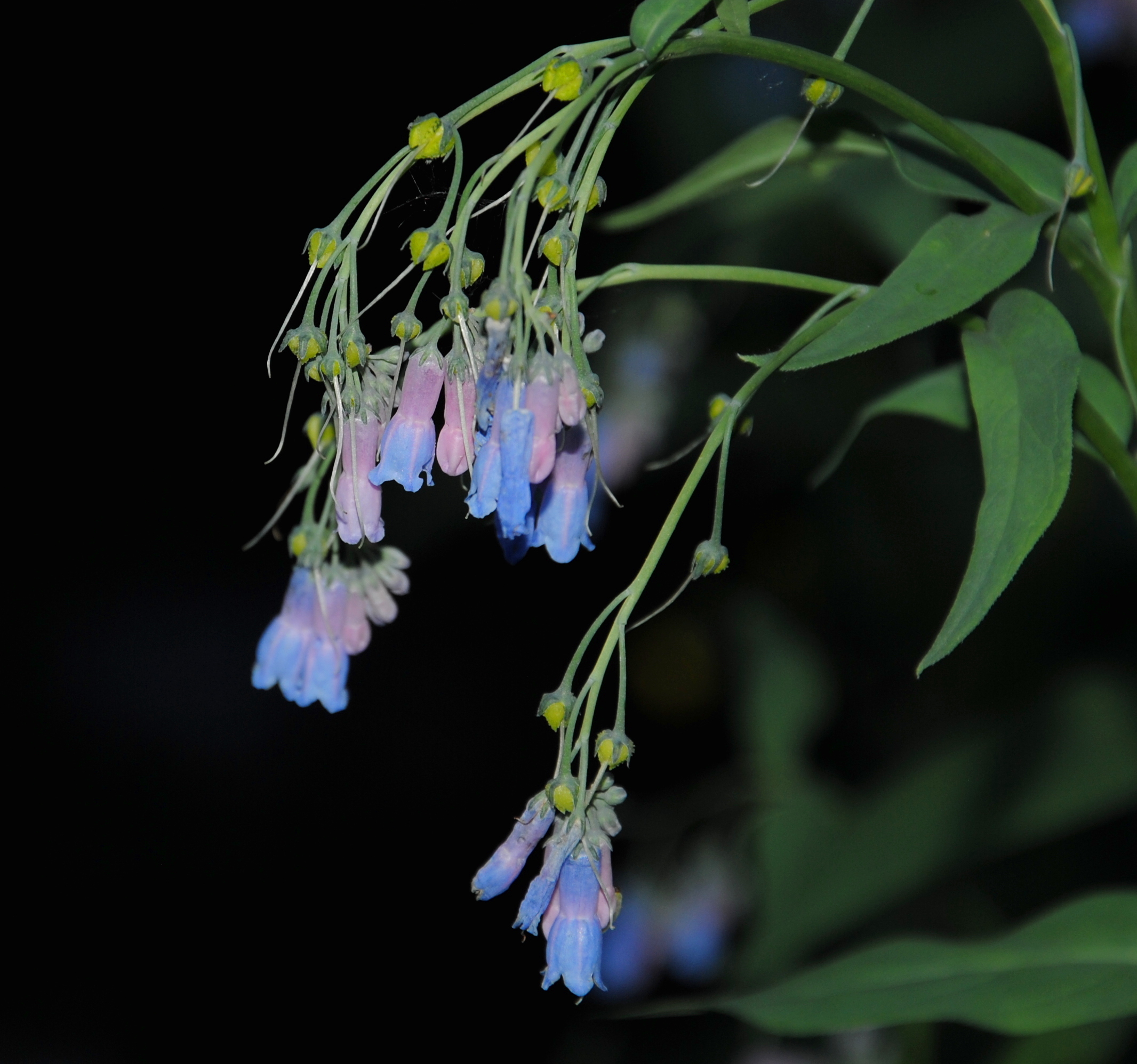Tall fringed bluebells
(Mertensia ciliata)

Description
Mertensia ciliata is a species of flowering plant in the borage family known by the common names tall fringed bluebells, mountain bluebells, and streamside bluebells. It is native to the western United States, in California, Nevada, Utah, and Oregon. It often grows in moist habitat, such as subalpine meadows and creeksides. It often carpets large areas of meadow and hillside with blue-green foliage and sweet-scented bluebell blooms. Mertensia ciliata is a perennial herb producing a cluster of erect stems from a thick, branching caudex. The leafy stems reach well over a meter in maximum height. The veiny leaves are oval to lance-shaped and pointed. The inflorescence is an open array of many clustered blue bell-shaped flowers each between 1 and 2 centimeters long. The hanging, fragrant flower is tubular, expanding into a wider, lobed mouth. As the individual flowers progress in age they change in color from blue to pink-red. The flowers bear poricidal anthers and are fertilized via buzz-pollination by several Bombus species. Primary Nectar robbing by Bombus species, including Bombus occidentalis is common in some populations. The flowers, young stems and leaves are edible raw; older leaves (when the plant tends to be hairy) should be cooked. The plant contains alkaloids so should not be eaten in high quantities. Mertensia is a genus of flowering plants in the family Boraginaceae. They are perennial herbaceous plants with blue or sometimes white flowers that open from pink-tinged buds. Such a change in flower color is common in Boraginaceae and is caused by an increase of pH in the flower tissue. Mertensia is one of several plants that are commonly called "bluebell". In spite of their common name, the flowers are usually salverform (trumpet-shaped) rather than campanulate (bell-shaped). Mertensia is native to most of North America and to a large part of Asia from western China to northeastern Russia. Its center of diversity is in the Rocky Mountains. Mertensia is mostly restricted to alpine, subalpine, and montane habitats. Notable exceptions are Mertensia maritima, a maritime plant of Arctic and subarctic coastlines, and Mertensia virginica, which is found from the Appalachian Mountains west to Minnesota, Iowa, and Missouri. Most of the species are endemic to very small areas of the Rocky Mountains.
Taxonomic tree:







